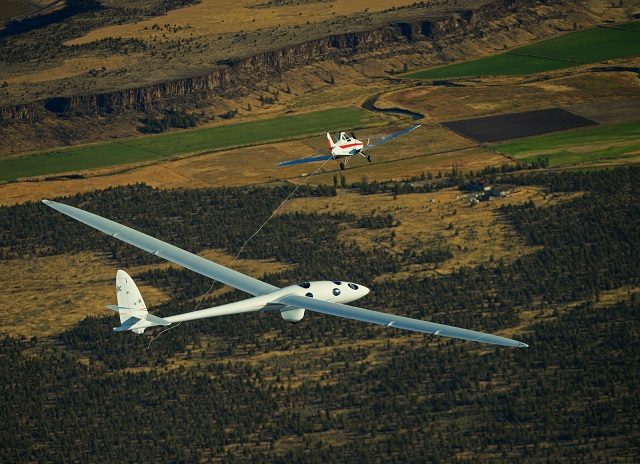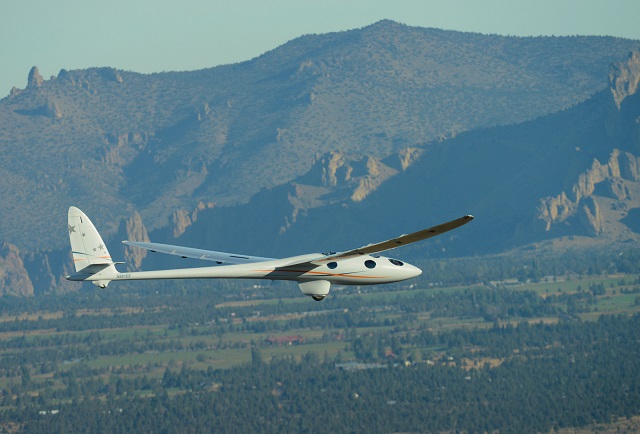The Airbus Perlan Mission II is a major step closer to the goal of sustained, piloted flight at 90,000ft following the successful first flight of the Perlan 2 experimental glider.
Launching early in the morning 23 September from the Redmond Municipal Airport in Redmond, Oregon, chief pilot Jim Payne and team pilot and project manager Morgan Sandercock were towed aloft by a Piper Pawnee towplane.
During a 12-minute climb, Payne checked the carbon-fibre glider’s control harmony and basic towing qualities. After releasing from the tow plane at an altitude of 5,000ft, the Perlan 2’s basic stability was tested and control checks were done. Other test manoeuvers included approach to stall, trim and air brake checks, and at the end of the 20 minute descent, the final pattern and landing behavior of the 25.6m (84ft) wingspan glider.
“It’s a beautiful flying airplane; it was a lot of fun today,” says Payne. “It flies like a big open class sailplane, which means it doesn’t roll very fast, but that’s the characteristic you have in the long wings. It’s very stable in pitch, and has slightly high stick forces, which you’d expect in a big open class airplane.”
Payne flew a rehearsal of Perlan 2’s first flight profile on 20 September, in fellow Perlan team member Dennis Tito’s DG Flugzeugbau DG-1001M glider. In order to simulate the view from the porthole-like windows of Perlan 2, the front canopy of the DG-1001 was masked to match the new glider’s SpaceShipOne-like design.

The Perlan 2 is expected to fly 20,000ft higher than the Lockheed Martin U-2 spy plane that is in operation today.
Airbus Perlan II Mission
Perlan 2 was flown in a basic configuration, equipped with flight instruments, radio and transponder as well as an LX-9000 gliding navigation system. The pressurised Perlan 2 has plug hatches, so it is equipped with a ballistic parachute system that the crew can deploy in the case of an emergency. This differs from a conventional glider’s jettisonable canopy that allows for pilots to egress and parachute to safety.
Perlan 2 will now return to the build process, to be fitted with its pressurisation and crew-rebreather systems. Ground vibration testing will then take place in San Diego, California, and the next test flights for the glider will begin in December 2015, in Minden, Nevada. There, the team plans to test all of Perlan 2’s systems at altitudes upwards of 40,000ft, flying into the famous Sierra Wave. The glider’s registration, N901EE, is a nod to the glider’s goal of being the first to fly at 90,000ft while also recognising the team’s founder and board chair – aviation legend Einar Enevoldson.
All going according to plan, the record-setting altitude flights will take place in El Calafate, Argentina in mid-2016 during the Southern Hemisphere’s winter season. Taking advantage of a little-known meteorological phenomenon called the Stratospheric Polar Night Jet, Perlan 2’s pilots hope to climb to 90,000ft and above to conduct scientific research.

Airbus Perlan II Mission
Source: FlightGlobal.com
















